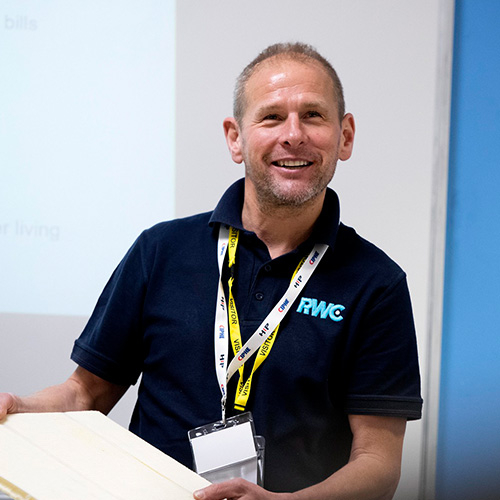Social media advice for plumbers and installers

For plumbing and heating installers looking to target domestic repairs, maintenance and improvement works, Facebook and Twitter are crucial business tools. Used by trades all over the world to promote services and engage with potential customers, these platforms are a free and handy way for installers to ensure their company looks professional and also to bring in new opportunities.
Here is our social media advice for plumbers and installers to build or improve their current presence on social media.
1. Polish your profiles
A Facebook business page or Twitter profile offers both regular and prospective consumers the opportunity to gain a better understanding of an installer’s reputation and if your page or profile doesn’t feel or look genuine, your plumbing services could appear that way too.
When it comes to the appearance of your page, it’s always handy to use as much branded material as possible so, in terms of your profile picture or cover photos, it’s best to keep it business-related. Try using a company logo or an image of your van.
Where possible, try to use high-resolution images that are 180 x 180 pixels in size – no one wants to see a profile picture cut in half or a logo that appears blurry. And such level of detail can make all the difference as it reflects the professionalism of your business.
Cover photos, on the other hand, work as a promotional billboard. If the right image is used, you can promote your services and current offers to show your customers what’s available to them. A high-quality photo of some recent work such as a bathroom or boiler installation can be a useful way of illustrating your speciality, further helping customers be confident in choosing your business.
When creating a page, an ‘About’ section is preformatted into the template, leaving room for business information and contact details.
Here, you can add:
- Email addresses
- Contact numbers
- Websites
- Company information so that potential customers can learn more about your business, your specialisms and further details about the services you provide.
When it comes to writing your summary, remember to keep it short and snappy and avoid spelling mistakes. If spelling and grammar aren’t your strong point, copy and paste your writing into Grammarly — a free online writing tool that acts as a proofreader and makes suggestions to improve your writing.
2. Focus on quality, not quantity
On average, a good post frequency for plumbing and heating businesses would be around three times a week on Facebook. You can stretch this to three times a day on Twitter. With that said though, focus more on the quality of posts rather than quantity.
Try not to overwhelm customers by posting too much, too often, so only really consider posting content that’s interesting to your audience, content that highlights your expertise or showcases your quality of workmanship.
Examples of posts that could work include:
- New products that your customers could benefit from
- Tips on how customers can maintain their plumbing and heating systems
- Company offers
- Behind the scenes content
- Customer testimonials and reviews
Always remember to use links and images to support the post as they can be eye-catching in people’s news feeds.
Also, consider posting questions and statistics to engage with the audience and incorporate videos, GIFs and infographics relating to plumbing or home services for a wider variety.

3. Make use of paid ads
To support your continuous pipeline of jobs, you may want to consider promoting your services through advertising. Social media advertising is one of the cheapest forms of advertising and can drive immediate results. Both Facebook and Twitter have advertising platforms for you to promote your services.
By focusing on the interests, age demographics and traits of a customer, you can promote your work to a wider audience for the price of coffee and a bacon sandwich.
For installers, the most useful targeting settings lie in Facebook and Twitter’s ability to promote services in certain locations, meaning customers between a one and eighty-mile radius of your home can see your ads, depending on how wide you want to cast your net.
Don’t be afraid to experiment with social advertising though, and if it doesn’t work the first time, try testing different budgets, targeting settings and objectives. There are plenty of tutorials for creating effective ads on YouTube which can help you in getting to grips with the basics.
4. Widen your reach
There are plenty of ways to widen your reach beyond paid ads too. On Facebook, use local community pages as most UK towns and villages now have their own groups. They’re easy to join and you’re able to advertise the services you offer within the group. You can also engage with local residents about the services you offer as well as latching onto requests for recommendations.
Before you do though, check with page admins that they permit business promotion before you post. Ignoring the page’s rules could lead you to a ban.
Also, don’t be afraid to ask friends and family for a favour and request them to share any important updates with their own friends and followers.

5. Encourage engagement
Interacting regularly with your followers and friends is key for exposure. By posting regular updates and photos of your work and services, your work is more likely to appear in the feeds and timelines of new customers — increasing the chance of new business.
You can also encourage engagement by adding your social media handles to your business card and always remember to ask customers to like and review your work after you’ve left a job.
According to a survey by Market Force research, 81% of its 12,000 respondents from the U.S. and UK confirmed that their purchasing decisions were directly influenced by their friends’ recommendations and posts.
So, if you are looking to build an online reputation and increase leads, it’s best to request feedback just after you have completed the job as the quality of service and rapport you have built with them is fresh in their mind. Doing so as you leave the job means customers are more likely to leave positive reviews.
When it comes to engaging with customers, try to pencil in some time to respond to both private messages and comments as the quicker you respond, the better.
